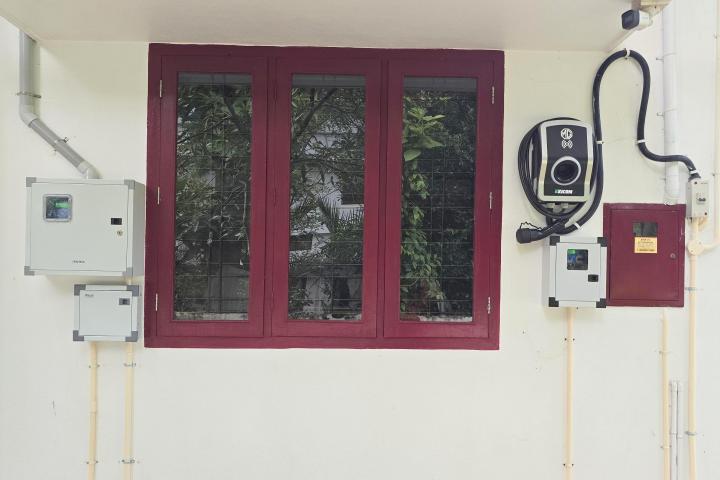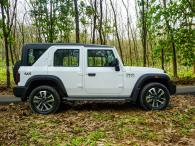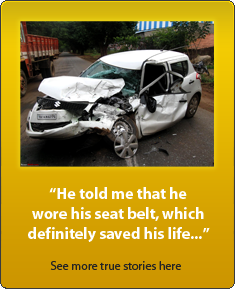News
Upgrading our home EV charging infrastructure for 2 electric vehicles
I already have an MG ZS EV and have now booked the BYD Atto 3 as my wife's Maruti Ignis will be out of commission for a while due to an unfortunate incident of waterlogging.
BHPian sushanthys recently shared this with other enthusiasts.
Hi guys,
It’s been one and a half years since I bought my MG ZS EV. I had previously explained in detail about setting up EV charging infrastructure at your home. I will be continuing on that topic, in this article.
Ever since our MG ZS EV came home, our electricity bill has increased exponentially. Our consumption comes to 1000 – 1200 units per billing cycle, of which the car uses around 600-800 units (Our EV has consistently averaged around 2500 km/ month of driving). The electricity bill comes to around Rs.10,000 – 12,000, every 2 months. This is still way less than what it would cost to run an ICE car (Our Ignis needs around Rs. 10,000 worth of petrol, every month). So, while I was not too worried about the hefty electricity bills (it was more or less expected), I was always looking for options to reduce the expense.
Installing a solar plant is a good way to bring down your electricity bill. We finally got it done, this June. Our house being a bit on the older side, had enough rooftop space only for a 5Kw plant. This solar plant will generate around 20 Units/day, depending on the climate (less during monsoons & more during summers). That would mean a generation of approximately 600 units/month, which would completely cover the electricity expenses of our house & bring down the rest of the electricity bill to manageable limits (As you all know, the more units you consume, you go to a higher slab of consumption and the tariff per unit increases. As I am consuming more than 1000 units every billing cycle, I am currently being charged at Rs.8/unit).
The solar plant was commissioned by a VGuard dealer, near our home. While I was discussing the details with him, he mentioned that the Kerala State Electricity Board (KSEB) had recently started providing domestic connections, solely for EV charging. The consumer will be charged at a flat rate of Rs.5.50/unit, regardless of the number of units used. This was a central government scheme, run by POWERGRID Corporation. He also mentioned that the scheme was not being advertised as of now and I will have to check with the KSEB office for details.
This was an interesting bit of information. I looked up the internet but could not find anything. I called up the KSEB Overseer whom I knew and asked him about the details. He confirmed what the dealer told me. The application process was the same as that of obtaining a new connection. I went to the KSEB Office, purchased a form for Rs.10 and went home. I wasn’t planning on applying immediately. The solar work was going on and I thought I would revert to this, once the plant was commissioned and after checking how the resultant electricity expenses came down to. But then, something happened.
At the end of June, my wife's car, a Suzuki Ignis, had to be sent to the workshop due to an unfortunate incident of waterlogging. The Ignis had clocked 90,000+ kms but was running well. We had been thinking about a new car to replace the Ignis but the planning had not reached the active stage yet. Both of our cars do a lot of running and 2 cars were a necessity at our home. Since the Ignis would be out of commission for at least a month, we needed a new car all of a sudden.
The next one week was spent in a whirlwind phase of test-driving. We drove literally every car under Rs.25 lakhs. And every car felt sluggish & underpowered (The only car which we both agreed to be even worth considering was the Maruti Fronx). After driving an EV, my wife simply could not accept going back to an ICE car. I had to agree (We test drove the top-spec Hyundai Creta Turbo Petrol DCT, Suzuki Grand Vitara and Honda Elevate but none of them were a match for our MG ZS EV).
We went to the Tata showroom to test drive the Nexon EV, but it was not available. The salesperson promised to call when the test drive car became ready, but he never called us back (We had checked with them 2 months back regarding the Punch EV test drive and they never got back to us then, either). Tata should improve their dealership experience (This was in direct contrast to Toyota when we went to check the Taisor. They did not have the car but kept in contact every day till the test drive car became available).
Somehow, Mahindra was not considered. MG ZS EV was readily available but we wanted to try another EV. It was at this time that BYD announced the facelift of Atto3. The Premium Variant fit all our needs and the price had come down by around 4.5 lakhs (ADAS Features were not available, at this price point but we were OK with that). We contacted BYD and they came from Kochi with their test drive car. We both drove it. We both liked it. Booked the car. For an EV, the range is important and so we went for the Premium variant with the 60 kW battery.
So suddenly, we were going to have a 2 EV garage. And since both EVs would be with us for the next few years, that meant their charging needs required a long-term solution. The solar panels were up & running by then. I felt the KSEB connection for dedicated EV charging would be a worthwhile long-term investment. Decided to proceed with it.
On checking with KSEB, they asked me to install all the necessary equipment and then apply for the connection. Our electrician took some time to come but as usual, did a very good job. The cost of the equipment and his services came to approximately Rs.15k.
The things specifically needed were:
- 3 phase connection
- Service wire – 16 Sq mm Aluminium (If you use the usual 10 Sq mm Copper cable, there is a risk of fire while using the 7.2 Kw charger)
- HRC 63A fuses (Avoid the 32A Porcelain fuses, again due to risk of fire)
- 10 Sq mm Copper wires to connect the Fuses to the Energy Meter
- Adequate earthing (10 Sq mm Copper Earthing Cable)
These upgrades were required in view of the 7.2 Kw AC Fast charger. Since there would be 2 EVs in our garage, a 7.2 Kw charger makes sense (Our house already had it). If you are not planning to install the Fast charger, items 2 & 3 are not necessary. But if you do it the proper way, you are future-proofing your charging infrastructure and can avoid hassles later on.
After completing the installation, my electrician gave me the necessary paperwork. (He was also preparing the documents for an EV Charging connection for the first time). I submitted it at the KSEB office and paid a fee of Rs.60. I got an SMS saying that the inspection would be completed within one week.
Nothing happened in the next week. Followed it up with the office. They finally did an inspection after 9 days. After another 4 days, they sanctioned the connection. The connected load was 8.5 kw (It included the 7.2 Kw AC Fast Charger and the 16A charging plug).

I paid a total amount of Rs.14,478 at the office (Cash. Still no POS machine/UPI facility). The KSEB Officials came after 6 days and completed the installation process.




Post installation, I got an SMS saying that my connection process is complete. My connection was categorised as LT – 10 (the usual 3-phase domestic connection is LT-1/three). I searched ‘LT – 10’ online and finally managed to get the details regarding domestic connection for EV Charging, which I have given below.

So, that’s it about the upgradation of charging infrastructure at my home. This is how it is going to stay unless I upgrade the AC fast charger to a higher spec. I may link this new connection to the existing solar grid in future but that may take a while.
I spent nearly 30k in upgrading my charging equipment. There will be those who will be wondering if this was actually necessary. After all, the solar grid would actually reduce my electricity bills, without the need to go through this whole rigmarole.
I would like to explain the reasons why I felt this was a good option.
First
During this summer, electricity consumption was at a record high. It got to the point where KSEB actually issued a public statement asking EV owners not to charge their cars at home at night. It was not enforced but in subsequent summers, the situation may change.
I pointed out before that we were interested in the Maruti Fronx. When I told the NEXA guys that we would be going for a BYD, the senior executive was not exactly happy. He wanted to discourage me by talking about range anxiety and other EV shortcomings. He also claimed that charging EVs at night causes grid issues & affects the electricity supply to the public. I understood that he was disappointed but it was news to me that people had a negative view about EV charging and its effect on voltage & supply grid issues and blamed it for power outages. I knew it was nonsense but Public Perception is a different thing. People have no issues operating multiple ACs at home during peak load hours but frown upon EV charging at night.
When you take a domestic connection for EV charging, none of these things matter. If anybody objects, we can always say that a dedicated connection has been taken for a very specific purpose. Peace of mind is important!
Second
In the past one year, KSEB has started applying different tariff rates for different times during the day. During peak load times (6PM to 11PM), they have raised the rates for customers whose usage exceeds a certain limit (250 units) every billing cycle (or per month, not sure). The month before our solar plant was installed, the meter reader person said that our electricity meter would have to be changed to a TOD (Time of Day) meter, due to increased consumption at night. TOD Meters divide the day into various slots and charge higher rates at peak load periods & low tariff rates at other times. Since EV owners cannot avoid overnight charging, their electricity bills will go up even more.
When you take the LT-10 connection, this issue is not there as it is a flat tariff (Rs.5.50/unit), regardless of your usage at whatever time of the day.
Third
So far, the government has been supportive of EVs with reduced Road Tax and other freebies. But as the number of EVs goes up exponentially and the Electricity Grid starts feeling the pinch, the situation may change. As of now, no curbs have been imposed on home EV charging. But just like EV manufacturers have started charging hefty sums for Charging cables & AC Fast Chargers (they used to come free with the car), things will be different in future. EV owners may be compulsorily asked to install solar plants or take dedicated EV charging connections (May be conjecture on my part but it doesn’t sound too far-fetched). We will have to wait & see.
Fourth
Regarding the extra cost of the new connection, this is a one-time expense. I will not have to spend anything extra for maintenance. If my calculation is right, even with 2 EVs, my electricity bill should be around 1000 -2000 rupees less than the present billing cycle. If you have only one EV, the savings will be even more. I should break even within 2 years and after that, the savings will keep on adding up. So, it is a win-win situation, whichever way I look at it.
Fifth
It is high time we did our bit for Mother Earth. I cannot control the source of electricity which I use, but I surely have control over reducing my Carbon emissions. With 2 EVs, I am doing my part in helping the environment. It may not be much, but it is something.
Disadvantages
- Cost. 30k is not a small amount.
- The hassle of running around for the connection. The electricity department was in no hurry whatsoever to take the necessary steps.
- Our house was built at a time when solar energy was a novelty and the concept of EV/EV Charging was unheard of. There was no provision for adding all the extra equipment as such. Thankfully, we had just enough space to accommodate everything, without it being an eyesore. It will not be possible for everyone. It may or may not be an issue for Apartment owners who want to take an individual LT-10 connection for their EVs.
- We installed our solar plant under the subsidy scheme (Rs.78,000 will be refunded once all the formalities are over). This subsidy is only applicable to domestic connections. If you are planning to install a solar plant for the LT-10 connection, you will have to opt for a non-subsidy scheme. However, you can link your LT-10 connection to an existing solar plant, taken for a domestic connection.
- If you look at the LT-10 tariff calculation for my connection, I will have to pay a fixed charge of Rs.1700 every 2 months (if my calculation is correct; I have not received the electricity bill yet for the new connection) which is definitely on the higher side. For my domestic LT-1/three connection, Fixed Charges come to around Rs.400-500.
That’s it for now. The purpose of this article is to let EV Owners know that they have another option available for EV charging.
I wanted to finish my article by including a picture of our 2 EV garage. But our Ignis is still in the workshop, the MG ZS EV had to be sent to the service centre for 2 weeks for a rear wheel suspension issue and the BYD Atto 3 has not arrived yet.
Life can be strange, at times!
Check out BHPian comments for more insights and information.









.jpg)




_1.jpg)




